
The stinking, corrupt vessel known as the slave ship Zong carried hundreds or poor souls across the Middle Passage during the Atlantic Slave Trade and is regarded as one of the vilest and most barbarous trips to ever set sail. It departed from São Tomé, an island off the coast of west Africa, in 1781 with 470 slaves aboard, close to double what was recommended for such a voyage. Out of pure greed and hubris, the young but seasoned captain Collingwood steered his overloaded ship out to the open sea, never suspecting it would soon he would a series of errors beyond his control, events that would turn his profitable slave ship into a floating beacon of agony, disease, and utter horror.
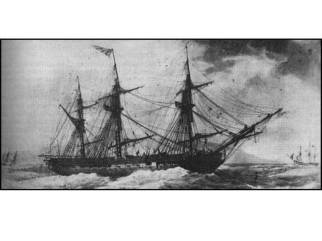 The Zong was an 18th-century slave trading vessel owned by a syndicate based in the English city of Liverpool. The ship had previously been a Dutch vessel with 244 Africans on board until it was seized by the British who proceeded to gather another 200 some slaves before heading out through the Atlantic’s Middle Passage, a term now synonymous with the dark history of human chattel. In September 1781, Captain Collingwood and his crew began their journey to the island of Jamaica, a trip that would end up taking a few shocking detours along the way.
The Zong was an 18th-century slave trading vessel owned by a syndicate based in the English city of Liverpool. The ship had previously been a Dutch vessel with 244 Africans on board until it was seized by the British who proceeded to gather another 200 some slaves before heading out through the Atlantic’s Middle Passage, a term now synonymous with the dark history of human chattel. In September 1781, Captain Collingwood and his crew began their journey to the island of Jamaica, a trip that would end up taking a few shocking detours along the way.
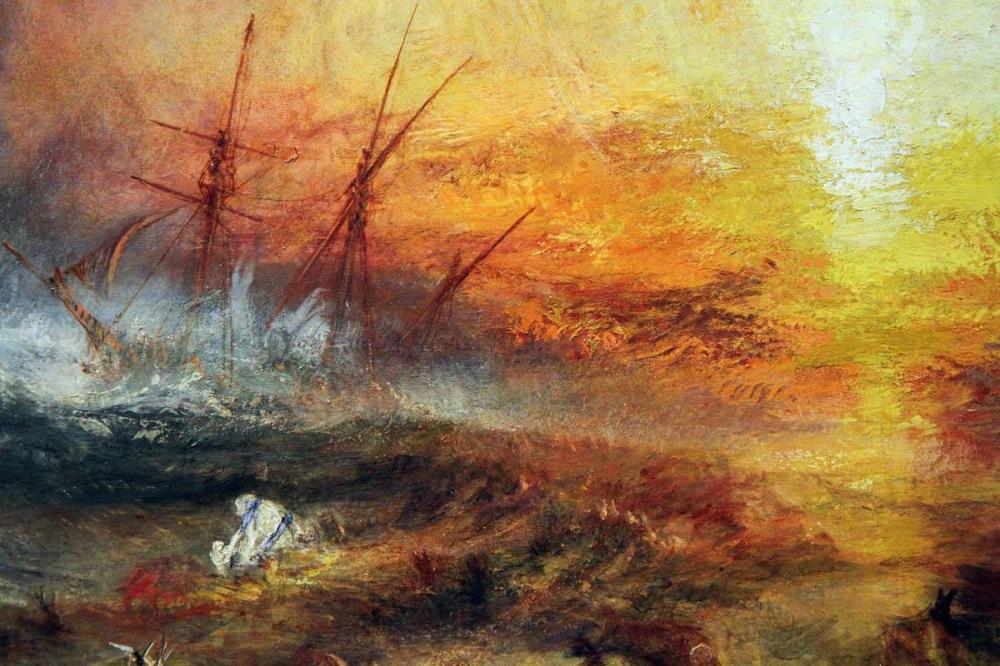
Slave ships were designed for many things—brutality, convenience, and pragmatistm—but never for comfort. But on this particular journey, the situation on board proved to be even worse than usual, as slaves were literally placed on top of each other below the reeking decks. While the Africans prisoners may have been regarded as subhuman, they did carry monetary value, and each individual had insurance taken out on their lives before the voyage began. Reaching the other side of the voyage with as many viable slaves was always the goal, no matter what. In pursuit of profit and gain, Collingwood decided to maximize his efforts by overstocking the Zong with a terrifying number of slaves, all of whom had to be watered, fed, and protected from the elements. As it turned out, very few of these requirements would be met.


The open ocean could be a formidable place and posed a great threat to vessels that did not take proper care. Up until this point, Collingwood’s only mistake was his overloaded cargo, but this would soon change as he began to steer off course in the middle of the unforgiving Atlantic. While these navigational mistakes were quickly rectified, they led the Zong into some unexpected waters, further from their destination than anticipated and without the proper amount of water to weather the extra journey.

Due to the lack of water and filthy accommodations, the ship’s human chattel soon began to suffer from disease and starvation, while the Zong sailed into the calm waters of an Indian summer. With no wind and a highly distressed crew, the ship sat stranded for several days on the windless sea while Collingwood retched his guts out below deck, having developed horrible sickness. Although gravely ill and barely able to leave his stateroom, the captain realized the slaved were dying and so were his chances of arriving in England with the means to a healthy profit. So, in his distress and fear, he made an unthinkable choice.
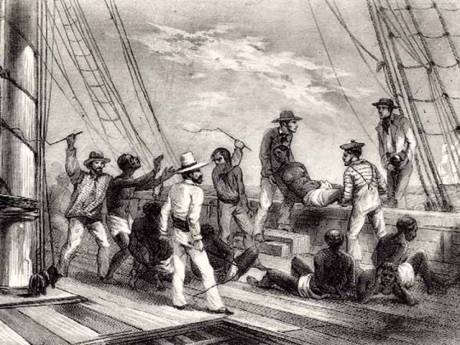 Even though the conditions on the Zong were ghastly, Collingwood’s strategy for survival made them significantly worse. He knew what it would mean if the sick slaves continued to die a natural death onboard—the financial responsibility would be him and the crew—the insurance carriers would never agree to compensate the sailors. But, if the slaves were to die in an attempt to save the ship, that would be a different story. If the crew was forced to thrown slaves overboard in the interest of saving the voyage, the fiscal responsibility would rest on the underwriters. Because slaves were then seen as merchandise rather than people, the decision was based purely on money and presented as such to the waiting crew.
Even though the conditions on the Zong were ghastly, Collingwood’s strategy for survival made them significantly worse. He knew what it would mean if the sick slaves continued to die a natural death onboard—the financial responsibility would be him and the crew—the insurance carriers would never agree to compensate the sailors. But, if the slaves were to die in an attempt to save the ship, that would be a different story. If the crew was forced to thrown slaves overboard in the interest of saving the voyage, the fiscal responsibility would rest on the underwriters. Because slaves were then seen as merchandise rather than people, the decision was based purely on money and presented as such to the waiting crew.
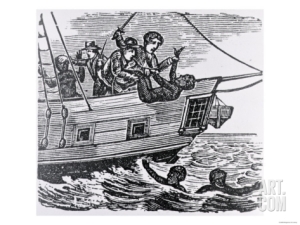
For the next three days, the deck of the Zong was filled with screams and moans as men, women, and children were tossed overboard to a watery grave. It was an unimaginable scene as people were torn from each other’s arms and tossed away like garbage. One slave was so desperate to live, he managed to climb back onto the boat, but by the end of the exercise, many were happy to die. The final ten victims sprang disdainfully from their executioner’s grasp and triumphantly leaped into the sea, finding freedom at last from their abominable condition.

Mistaking the coast of Jamaica for the French colony of St. Domingue (Haiti), the Zong overshot its destination, finally reaching the port of Black River, Jamaica on December 22—four months after its initial departure from Africa. Captain Collingwood finally succumbed to his illness and died shortly thereafter, leaving behind approximately 200 African captives who were sold on the block to the highest bidder. The ship’s voyage log documenting the experience mysteriously disappeared around that time, and the ship was later commissioned back to England.

When the Zong returned home, the owners and remaining crew claimed the full value of the murdered slaves from the insurance underwriters, reminding them of how the deaths were technically done to save the ship. They maintained it had been necessary to throw the slaves overboard due to a shortage of potable water, but many people in the know recognized this as a lie. Despite the fact, the trial pressed on for many long weeks.
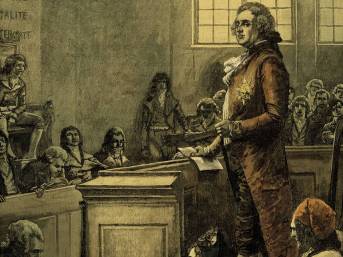
While the court initially ruled in Collingwood’s favor, the decision was eventually overturned when the records revealed the Zong actually had 420 gallons of water when it landed in Jamaica at the end of its voyage, plenty to make it through such a trip. This court case became so visible in London at the time that it drew the unwelcome attention of several local abolitionists. Although the tragedy of the Zong did not change anything, it did begin to turn the tide of those inclined to oppose slavery in general.
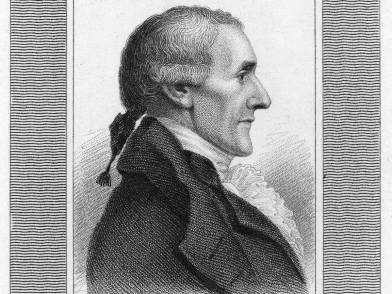
Granville Sharp, an English scholar, reformer, abolitionist, and founder of the English Society for the Abolition of Slaves, was a tenacious man who would not let this case go unnoticed. Even by the standards of the vicious mid-Atlantic slave trade, the story of the Zong was scarcely credible. Along with the efforts of Olaudah Equiano, a prominent freed slave in England, he embarked on a personal campaign to bring the horrors of this issue to light for all to see.
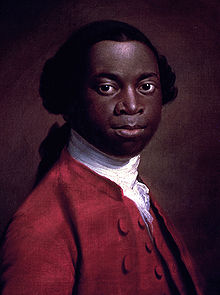 Despite this work, the 19th-century would continue to see an increase in the deliberate killing of slaves onboard traveling vessels for a variety of logistical reasons. Nonetheless, Sharp and Equiano would do much to further the cause, and the Zong eventually became a marker of the extreme depravity characterized by the slave trade as a whole.
Despite this work, the 19th-century would continue to see an increase in the deliberate killing of slaves onboard traveling vessels for a variety of logistical reasons. Nonetheless, Sharp and Equiano would do much to further the cause, and the Zong eventually became a marker of the extreme depravity characterized by the slave trade as a whole.
As a result of the fierce abolitionist movement taking shape in England, the Anti-Slavery Society was founded in 1823, dedicating itself to the end of slavery throughout the British Empire. This was finally achieved through the Slavery Abolition Act in 1833, much of which was fueled by the initial story of the appalling Zong voyage.
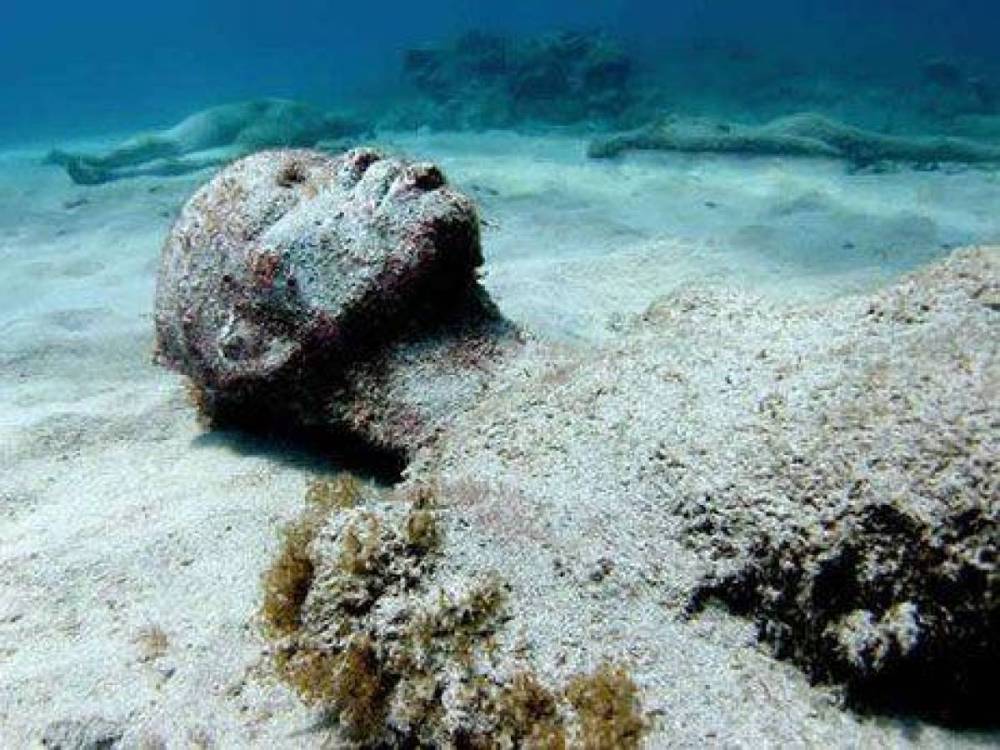
Today, a memorial to these victims and all of the slaves who suffered the horrors of the Middle Passage lies off the coast of Grenada in the West Indies. Fittingly, a plaque of honor has also been erected in Black River, Jamaica where the ship first arrived from Africa.

As tourists travel and explore these areas looking for mangroves and alligator sightings, they can also be reminded of the bleak legacy left behind by the transatlantic slave trade.
And the rest is history.

Reblogged this on Jason's Shulman.
LikeLike
I liked the piece you wrote! Thanks for reading and staying engaged with history. Best, TRR
LikeLike
Thank for sharing such a touching story. History gives us
LikeLike
It is amazing to know where we came from to see how far we’ve come. The mistreatment that was put upon the African people is by far the most disgusting. It is a horror to know that people had to suffer tremendously and go through decades of pain for the United States to become the land of the free and it still has it stains from history. This voyage that took place is heart wrenching because I could never imagine experiencing something so vile. I could never imagine having skills that helped me survive and then being ripped out of my home to apply those skills to someone else’s benefit and be treated like dirt. I can’t image having to experience that because of the color of my skin.
LikeLike